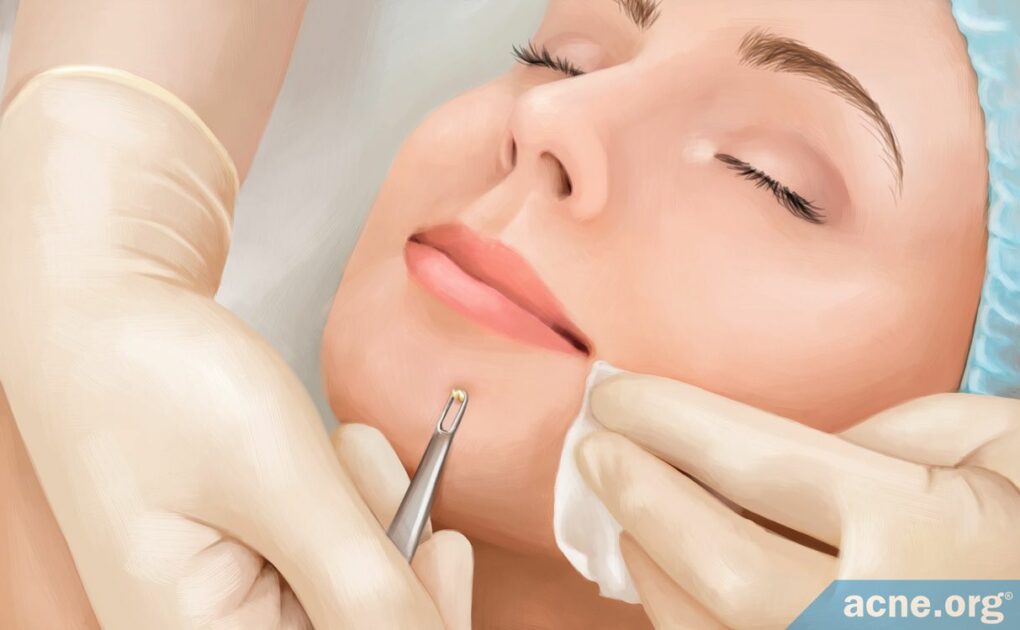Comedone Extraction Is a Procedure to Remove the Contents of Clogged Pores. Professional Comedone Extraction Might Help with Mild Acne but May Worsen Severe Acne.

The Essential Info
What is it? Comedone extraction is a procedure in which a doctor, nurse, or esthetician/cosmetician uses a small metal tool called a comedone extractor with a loop on one end to expel the contents of clogged pores. It takes only a few minutes.
What types of lesions is it good for? Comedone extraction is only appropriate for whiteheads and blackheads–acne lesions with a white or black dot in the center but with no redness whatsoever. Comedone extraction can prevent whiteheads and blackheads from turning into red, inflamed lesions and can help your skin to look clearer in the short term. However, attempting comedone extraction on red, inflamed lesions is a bad idea and will likely make your acne worse and/or lead to scarring.
Never try at home: If you decide to try comedone extraction, be sure to make an appointment at a dermatologist’s office or at a beauty salon or spa. Never attempt comedone extraction at home, because you are likely to irritate the skin, which may lead to more acne and increased chances of scarring. Tip: If you do get comedone extraction, make sure it is not accompanied by any scrubbing or microdermabrasion, which may cause skin irritation and make your acne worse.
Is it worth it? In most cases, no. Comedone extraction needs to be performed regularly to maintain results, so costs (which can be $200 per visit) can add up quickly. Since results are only temporary, getting your acne under control and preventing future whiteheads and blackheads in the first place is a much better option.
My personal experience with it: I got this done one time back in college. I was broken out pretty badly and went in for a dermatologist visit to explore more treatment options. During the visit, the doctor himself performed comedone extractions on me. I didn’t like anything about the experience. First of all it felt uncomfortable with someone looking so closely at my skin. Next, it left my skin red and irritated. And worst of all, I ended up breaking out again shortly after I got it done, which I now know was probably from the irritation it caused. My advice: Avoid.

The Science
- What Types of Lesions Is Comedone Extraction Appropriate For?
- Who Can Perform Comedoe Extraction?
- The Logic Behind Comedone Extraction
- Does Comedone Extraction Actually Help with Acne?
- How Long Will the Results of Comedone Extraction Last?
- Risks of Comedone Extraction
- What to Expect During Comedone Extraction
- The Bottom Line
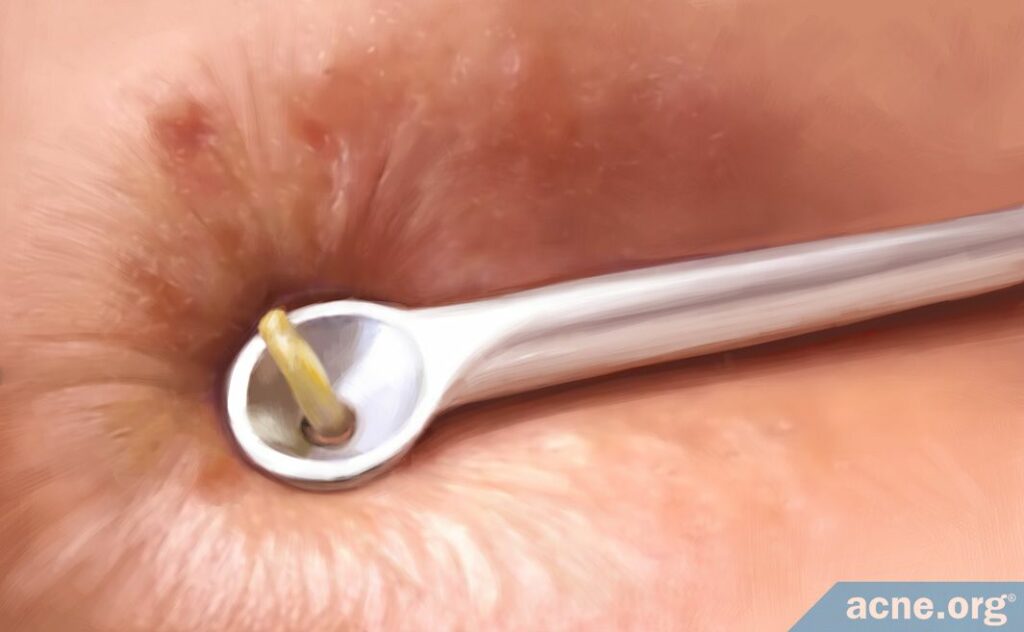
Comedone extraction is a procedure for physically removing comedones (clogged pores, also known as whiteheads and blackheads, that are not red or sore) from the skin. It consists of applying pressure around the opening of the pore in order to push out the substances clogging the pore.1,2 Comedone extraction should not be confused with popping pimples.
What Types of Lesions Is Comedone Extraction Appropriate For?
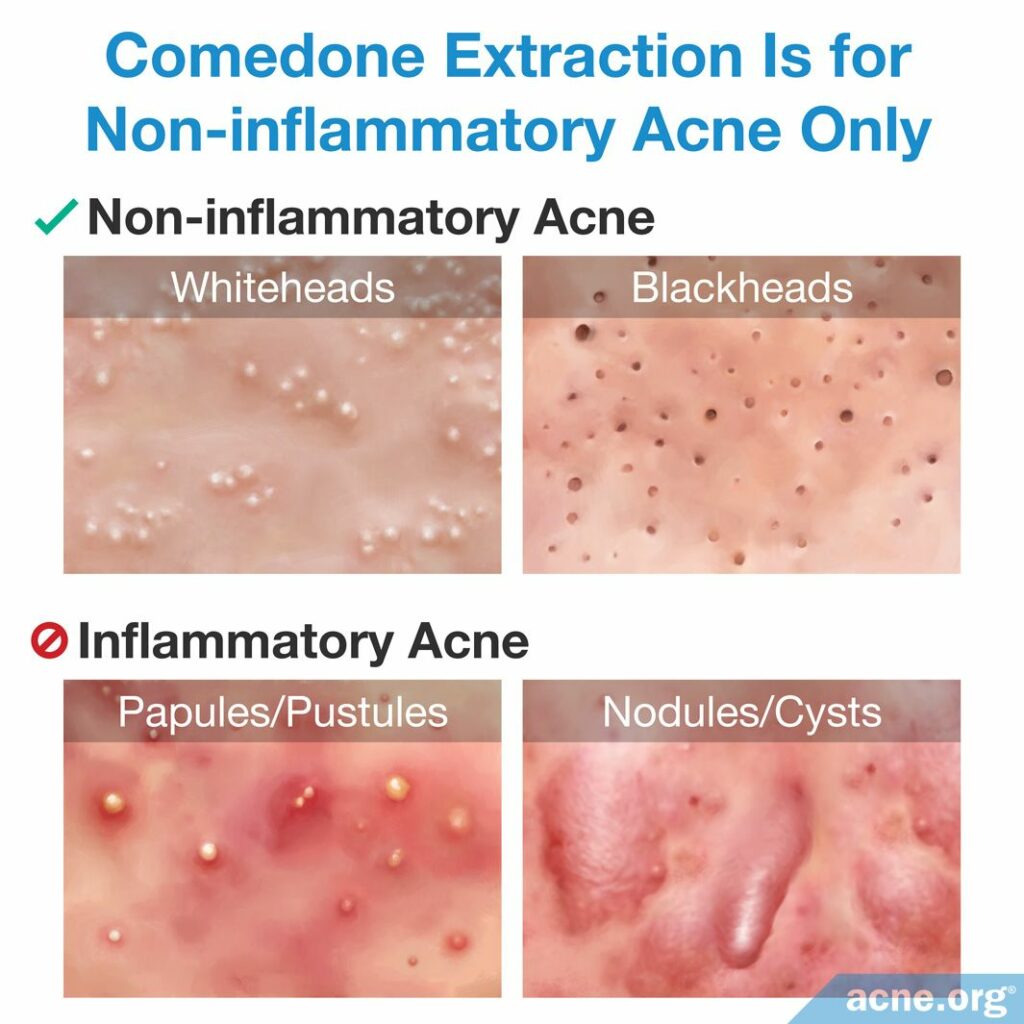
Comedone extraction is only for acne lesions with white or black centers that are not red in any way. Let’s look at the different types of acne lesions and whether comedone extraction is appropriate for them:
- Non-inflammatory lesions (appropriate for comedone extraction): These are small clogged pores (comedones) with a white dot in the center (whiteheads) or with a black dot in the center (blackheads) but with no redness inside or around them.
- Inflammatory lesions (not appropriate for comedone extraction): These are larger pimples called papules and pustules (lesions with red centers or with redness around them) that may be itchy and sore. Performing comedone extraction on these lesions is a bad idea because it will likely irritate the skin and make your acne worse. However, if you have a pimple with a white or yellow center, you can learn the proper way to pop it.
- Cystic acne lesions (not appropriate for comedone extraction): These include nodules and cysts (large, red, painful lesions over 5 mm in diameter).Performing comedone extraction on these lesions is a very bad idea because it will likely lead to scarring. Instead, make an appointment for a cortisone shot with your doctor.
Note: If you have a mix of different types of acne lesions, comedone extraction can be performed just on the non-inflammatory lesions.
Who Can Perform Comedone Extraction?
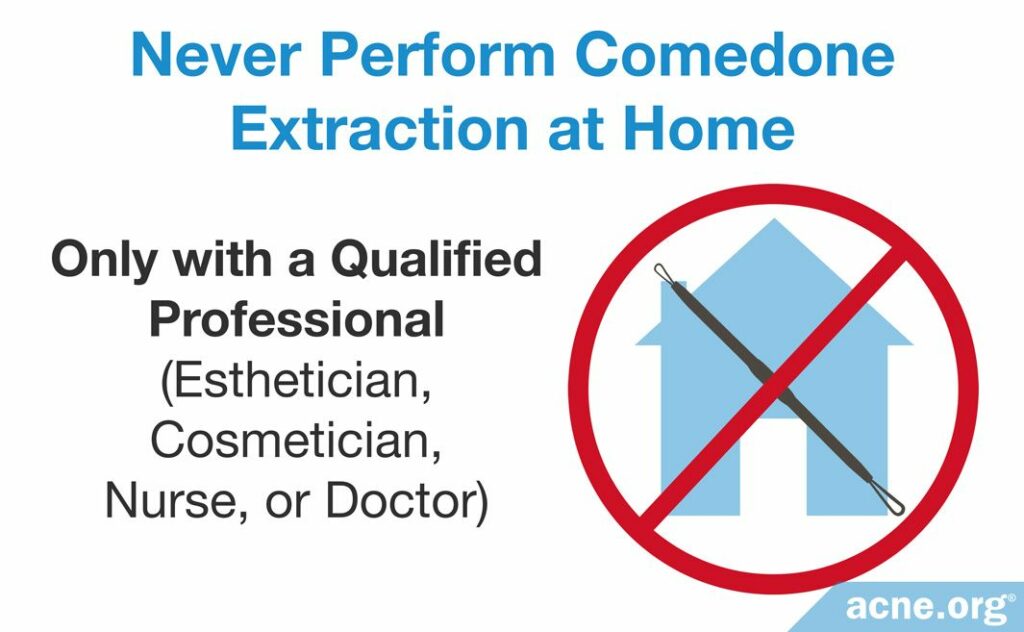
Professionals who perform comedone extraction include:
- Dermatologists and nurses: Dermatologists or nurses in a dermatologist’s office perform comedone extraction as a stand-alone procedure or together with other procedures such as cryotherapy.
- Estheticians and cosmeticians: These professionals perform comedone extraction at beauty salons and spas as part of acne facials, not as a stand-alone procedure.2
NEVER TRY IT YOURSELF: Comedone extraction requires skill and experience, and if performed improperly, it can damage the skin, increase the risk of skin infection, and increase the chance of scarring. At best, you risk irritating the skin, and we know that anything that irritates the skin can lead to more acne. If you decide to try comedone extraction, book an appointment with a skilled professional.
The Logic Behind Comedone Extraction
There are two main reasons to undergo comedone extraction:
- Improving appearance: Removing comedones makes the skin look clearer in the short term.
- Preventing acne from becoming more severe: Unclogging pores removes non-inflammatory lesions before they turn into more severe inflammatory lesions.
If you are curious to know more about the science behind how removing comedones can pre-empt more severe types of acne, you can read more here:
The logic behind comedone extraction: The full scoop
To understand the logic behind removing comedones, we need to look closely at what comedones are and how they can turn into more severe types of acne lesions.
Comedones are basically clogged pores. Comedones come in two varieties: closed and open. Closed comedones (whiteheads) look like white bumps under the skin because the clogged skin pore is not open to the surface. Open comedones (blackheads) look like black dots because the pore opens onto the skin surface. Open comedones may look like dirt in skin pores, but what appears as dirt is actually the skin pigment melanin, which turns into a dark spot when it comes into contact with oxygen in the air.
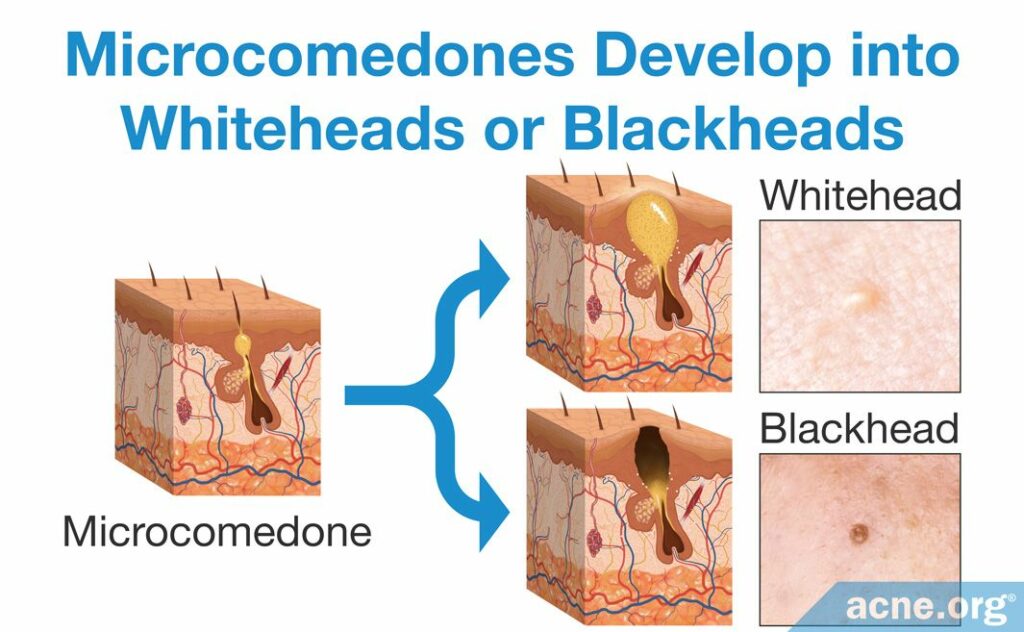
Comedones are not red or sore and are known as non-inflammatory lesions. However, if a comedone continues to expand, the walls of the follicle may rupture, resulting in inflammation. At this point, the comedone turns into an inflammatory lesion. Inflammatory lesions have redness in or around them and are sometimes painful. Inflammatory acne lesions include papules and pustules.
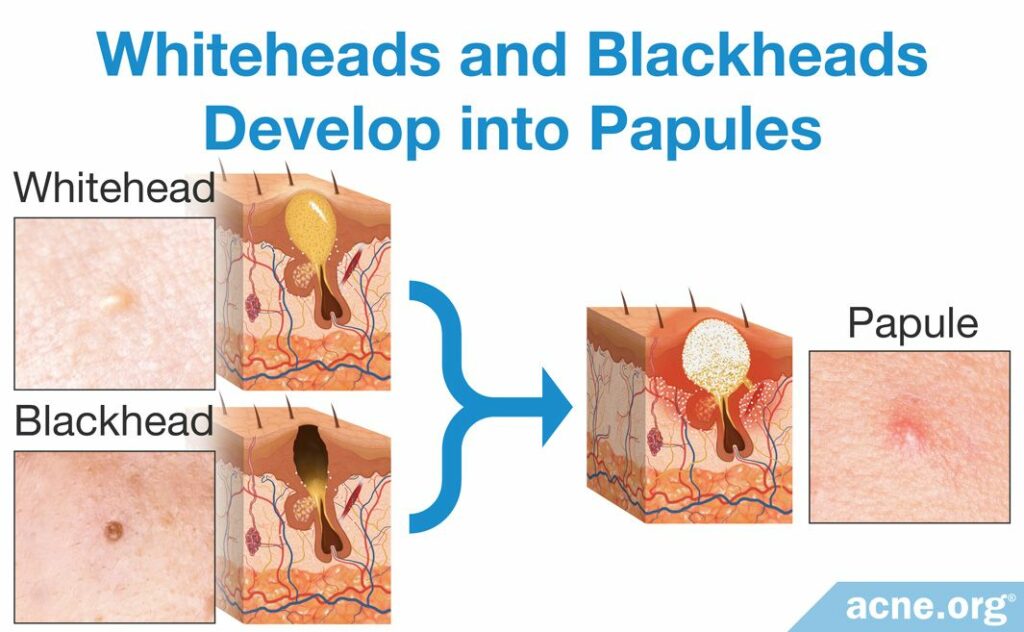
There is some evidence that extracting comedones can prevent them from turning into inflammatory lesions.3 This helps avoid the pain that comes with inflammatory acne. It may also allow the acne to heal faster, because comedones heal quickly without scarring, unlike inflammatory lesions, which can take longer to heal and may leave scars.4
Does Comedone Extraction Actually Help with Acne?
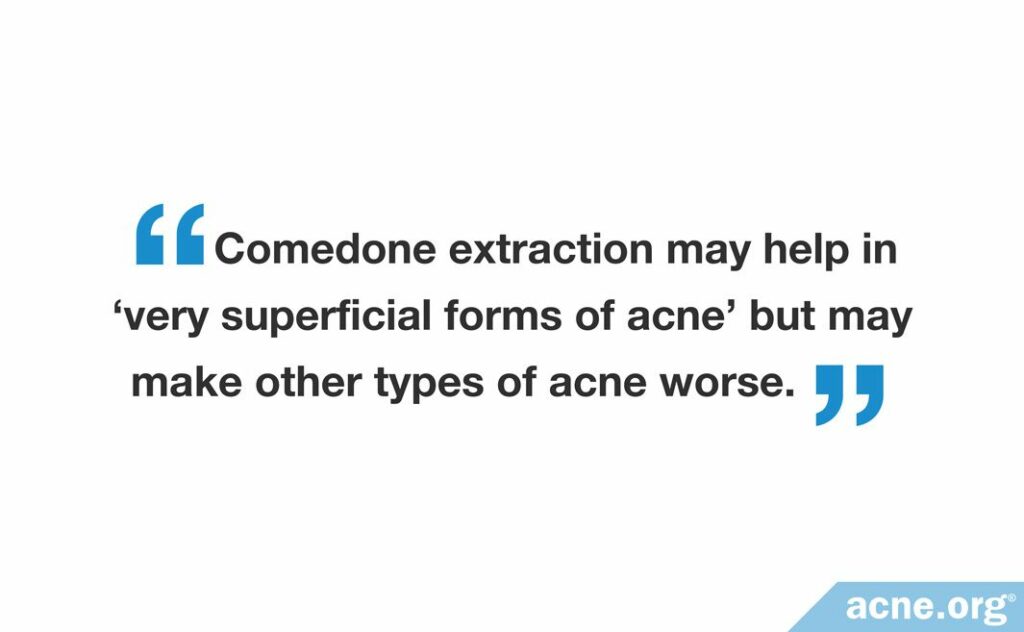
Despite the wide use of comedone extraction by dermatologists, estheticians, and cosmeticians, very few studies have looked at whether the procedure really helps with acne.5 Let’s take a look at the limited research we do have.
The research on comedone extraction

The best evidence we have comes from an old study published in 1964 in the Journal of the American Medical Association. In that study, researchers performed comedone extraction on 32 patients with acne of varying severity. They concluded that for people with mild acne, non-inflammatory acne, comedone extraction helped prevent the development of inflammatory acne lesions for up to 3 months after the procedure. However, for people suffering from cystic acne, comedone extraction actually tended to make their acne worse. The study authors wrote, “this procedure was effective in most patients in preventing the development of inflamed acne lesions when applied…in patients with very superficial forms of acne…Inflamed cystic acne tended to be made worse by comedone extraction.”3
Expand to reveal details of study

The researchers performed comedone extraction on only one side of the face in 32 patients. For 20 of these patients, comedones were extracted on the forehead, while for the remaining 12 patients, comedones were extracted on the cheeks or chin. After performing comedone extraction 4-10 times at intervals of 1-2 weeks, the researchers compared the two sides of the face over up to 3 months after the last extraction. They concluded that for people with mild acne, the side of the face where comedone extraction was performed continued to develop fewer inflammatory lesions than the other side of the face for up to 3 months. However, for people with cystic acne, breakouts tended to be worse on the side of the face where comedone extraction was performed.3
To date, there is no other scientific evidence to tell us how effective comedone extraction is in improving acne.
However, a few other researchers have commented on comedone extraction:

In an article published in 2011 in The Journal of Clinical and Aesthetic Dermatology, researchers wrote that comedone extraction works well as an addition to isotretinoin therapy. They noted that comedone extraction can remove stubborn comedones that still remain after isotretinoin treatment and can thus help patients achieve clear skin.6
Expand to reveal details of article

The authors of the article provided examples of patients who still had comedones on their skin after completing a course of treatment with isotretinoin. The researchers wrote that by performing multiple comedone extractions, they were able to clear the patients’ skin of these remaining comedones. The spots did not scar after comedone extraction.6
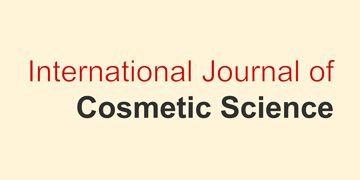
In an article published in 2011 in the International Journal of Cosmetic Science, the authors of the article wrote that for women with premenstrual acne, comedone extraction is most beneficial when done at the time of ovulation. This should prevent the formation of inflammatory acne lesions like papules and pustules before it has a chance to begin.7
To sum up what we know from the limited research to date, comedone extraction might help with non-inflammatory acne, at least temporarily, and may be a useful addition to other acne treatments. However, it should be reserved for only non-inflammatory acne.
How Long Will the Results of Comedone Extraction Last?
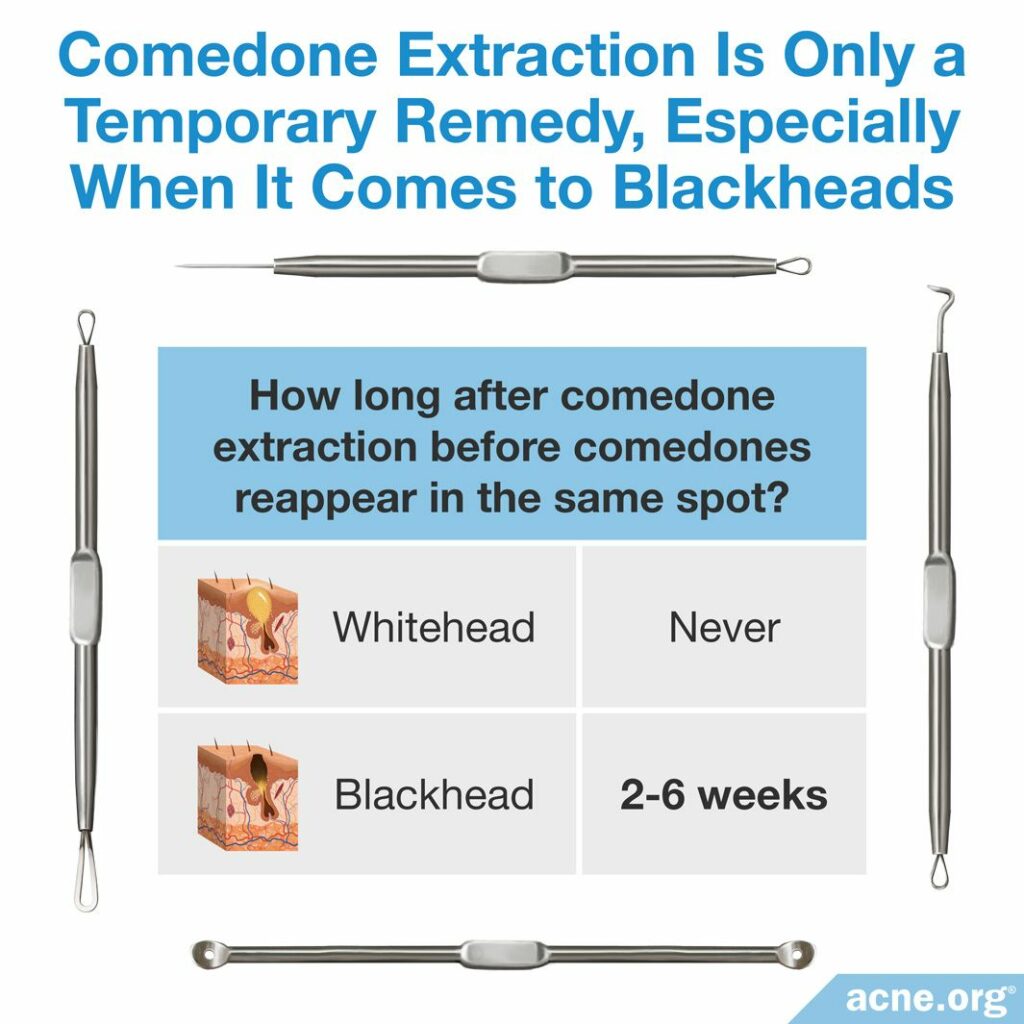
Results on whiteheads may last, but not for blackheads:
- Whiteheads: Whiteheads usually go away completely within 12 days after extractions. In other words, whiteheads will not reappear in the same spot. Of course, with time, new whiteheads will likely pop up in other places.
- Blackheads: Blackheads usually refill and regain their black centers 2 – 6 weeks after comedone extraction.8 There is always the possibility that the extraction fails to completely remove the contents of the skin pore, and in this case the blackhead may come back sooner.5

Comedone extraction is only a temporary remedy, especially when it comes to blackheads. It helps the skin to look clearer in the short term, and patients often like the immediate look of clearer skin. As the authors of a 2003 article in the Journal of the American Academy of Dermatology wrote, “Extracting comedones results in an immediate improvement, which patients appreciate.”9
Comedone extraction may also temporarily stop whiteheads and blackheads from turning into inflammatory lesions like papules and pustules. By catching these lesions while they are still mild and non-inflammatory, you can nip the formation of new inflammatory lesions in the bud.
However, regardless of whether comedone extraction may help in the short term, it is not a fix for acne on its own and must be combined with other treatments.
Risks of Comedone Extraction
In general, blackheads and whiteheads heal relatively quickly after comedone extraction and usually leave no scars. However, if performed improperly, comedone extraction can result in:
- Pushing the contents of clogged pores even deeper into the skin, making the lesion last even longer than it would have naturally
- Skin infection
- Damage to the skin
- Scarring8-11
Some beauty salons offer extractions for inflammatory lesions like pustules, which are red lesions with a white or yellow center. In this case what they likely mean by “extraction” is popping pimples. It’s fine to have this done by a professional or learn the proper way to do it yourself. However, for nodules or cysts, attempting extraction is a very bad idea and will likely leave scars.
What to Expect During Comedone Extraction
If you decide to book an appointment for comedone extraction, here is what you can expect:
Cost:
At a dermatologist’s office: Comedone extraction will likely cost about $200, although pricing will vary depending on your location. Call your health insurance provider to find out whether your insurance plan will cover part of the cost.
At a beauty salon or spa: Comedone extraction will likely be offered as part of an acne facial costing around $200, although again, prices will vary depending on your location and the particular type of facial. Procedures at a salon or spa are considered cosmetic, so your health insurance will not cover this treatment.
Research shows that four or more treatments are necessary to see results,3 so you will probably need to schedule repeat visits to the dermatologist or beauty salon. The total cost of all the extractions may therefore add up to $800 or more.
How long it takes:
At a dermatologist’s office: Comedone extraction itself will likely take only about 5 minutes. The whole appointment, including preparing the skin for extraction, will take up to 30 minutes. In addition to comedone extraction, your doctor may suggest other treatments for non-inflammatory lesions, such as cryotherapy.
At a beauty salon or spa: Comedone extraction will typically be part of a facial that takes 60-90 minutes.
What happens during the appointment:
At a dermatologist’s office: To soften the skin before extraction, the doctor may use steam.
In addition, the doctor may perform mild exfoliation (removal of dead skin cells) to help loosen the plugs that clog skin pores. This should help prepare the skin for comedone removal. Exfoliation using a chemical peel makes comedones easier to extract.4 CAUTION: Physical exfoliation, such as by scrubbing or microdermabrasion, is not a good idea as it may irritate the skin and actually make acne worse. Make sure your comedone extraction does not come with any type of physical exfoliation.
After preparing the skin, the dermatologist or nurse will perform comedone extraction under sterile conditions. In other words, he should be wearing gloves and using sterilized instruments. The instrument he will use is called a comedone extractor. This is typically a metal instrument with a loop on one end.10
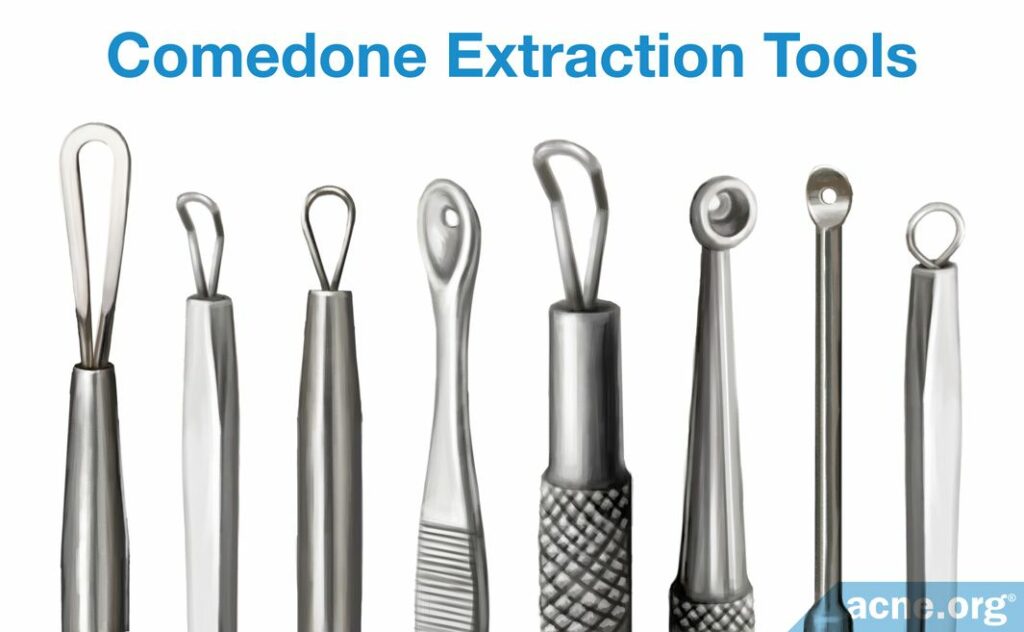
For blackheads, the dermatologist or nurse will position the loop of the comedone extractor around the blackhead and apply gentle pressure. This will squeeze the contents of the comedone out. For whiteheads, they may have to first pierce the comedone slightly with a needle to create an opening to release the contents.10 Comedone extraction may be somewhat uncomfortable but should not be painful.
After comedone extraction, your skin may be irritated and somewhat sore from the pressure of the procedure. The doctor or nurse may apply an antimicrobial and/or an anti-inflammatory cream to help prevent infection and calm the skin after the procedure.2,7,12
At a beauty salon or spa: The process of comedone extraction will be similar to the one at a doctor’s office. The difference is that at a salon or spa, additional procedures designed to relax you and/or to improve the appearance of your skin will occur before and/or after the comedone extraction. Such procedures may include a facial massage, treatment with LED lights, and application of a moisturizing cream or mask.
The Bottom Line
If you have non-inflammatory acne, comedone extraction may be an option for improving your acne in the short term, but will not provide a long-term fix, and costs can add up quickly. Make sure to undergo comedone extraction at a dermatologist’s office or beauty salon. Do not attempt comedone extraction at home, and never try comedone extraction on severe forms of acne like cystic acne.
References
- Comedo extraction. https://en.wikipedia.org/wiki/Comedo_extraction
- Comedo. https://en.wikipedia.org/wiki/Comedo
- Lowney, E. D., Witkowski, Simons, H. M. & Zagula Z. W. Value of comedo extraction in treatment of acne vulgaris. JAMA. 189, 1000-1002 (1964). https://www.ncbi.nlm.nih.gov/pubmed/14188876
- Fox, L., Csongradi, C., Aucamp, M., du Plessis, J. & Gerber, M. Treatment Modalities for Acne. Molecules. 21, 8 (2016). https://www.ncbi.nlm.nih.gov/pubmed/27529209
- Taub, A. F. Procedural treatments for acne vulgaris. Dermatol. Surg. 33, 1005-1026 (2007). https://www.ncbi.nlm.nih.gov/pubmed/17760592
- Wise, E. M. & Graber, E. M. Clinical pearl: comedone extraction for persistent macrocomedones while on isotretinoin therapy. J. Clin. Aesthet. Dermatol. 4, 20-21 (2011). https://www.ncbi.nlm.nih.gov/pmc/articles/PMC3225139/
- Steventon, K. Expert opinion and review article: The timing of comedone extraction in the treatment of premenstrual acne–a proposed therapeutic approach. Int. J. Cosmet. Sci. 33, 99-104 (2011). https://www.ncbi.nlm.nih.gov/pubmed/20807258
- Cunliffe, W. et al. Comedone formation: etiology, clinical presentation, and treatment. Clinics in Dermatology 22, 367-374 (2004). https://www.ncbi.nlm.nih.gov/pubmed/15556720
- Gollnick, H., Cunliffe, W., Berson, D., Dreno, B., Finlay, A., Leyden, J. J., Shalita, A. R., Thiboutot, D.; Global Alliance to Improve Outcomes in Acne. Management of acne: a report from a Global Alliance to Improve Outcomes in Acne. J. Am. Acad. Dermatol. 49 (1 Suppl), S1-37 (2003). https://www.ncbi.nlm.nih.gov/pubmed/12833004
- Mukhtar, M. & Sharma, R. Surgical pearl: the safety pin as a better alternative to the versatile paper clip comedo extractor. Int. J. Dermatol. 43, 967-968 (2004). https://www.ncbi.nlm.nih.gov/pubmed/15569035
- Kaya, T. I., Tursen U., Kokturk, A. & Ikizoglu, G. An effective extraction technique for the treatment of closed macrocomedones. Dermatol. Surg. 29, 741‐744 (2003). https://www.ncbi.nlm.nih.gov/pubmed/12828698
- Skin care for acne-prone skin. https://www.ncbi.nlm.nih.gov/books/NBK279208/
 Acne.org Products
Acne.org Products